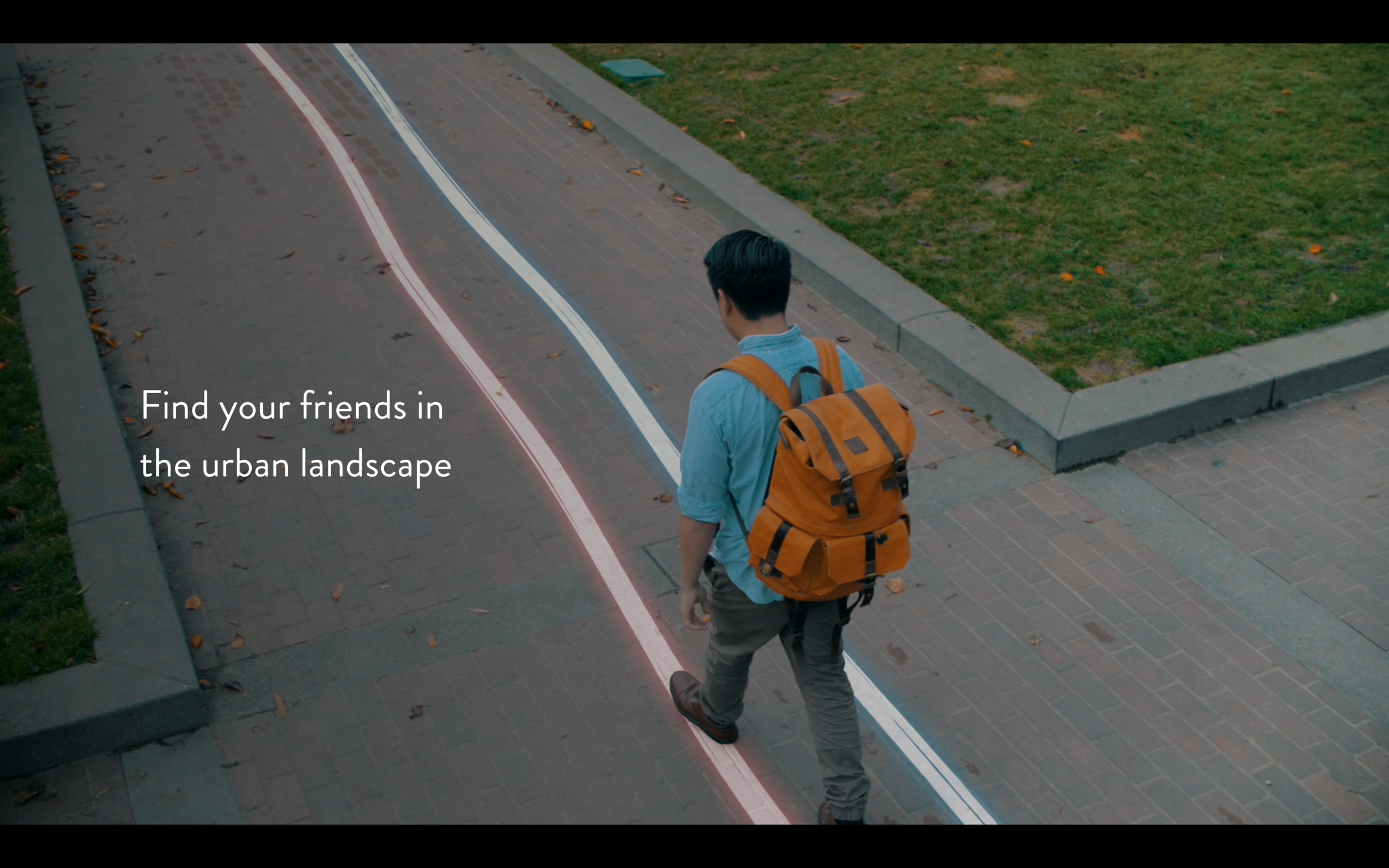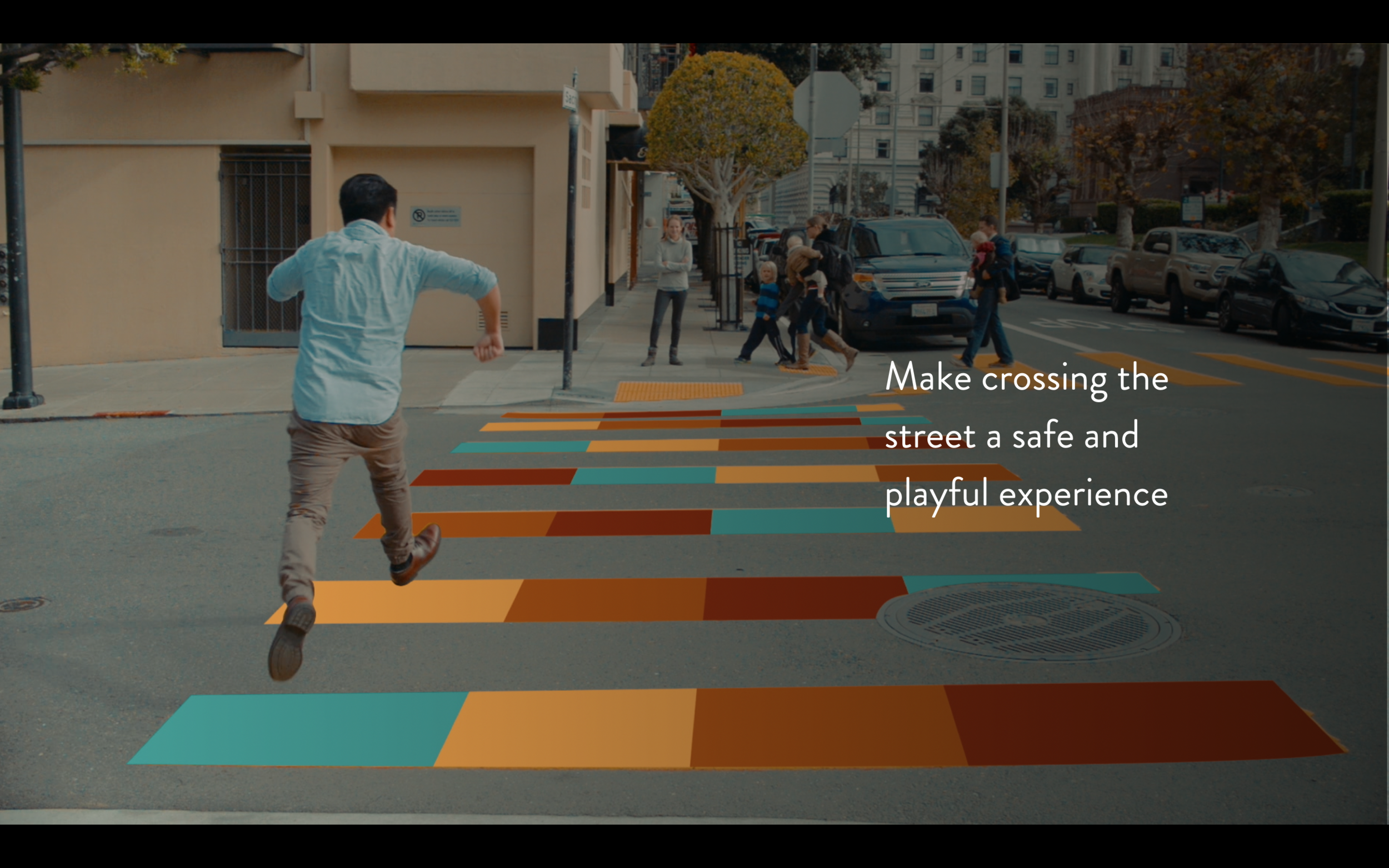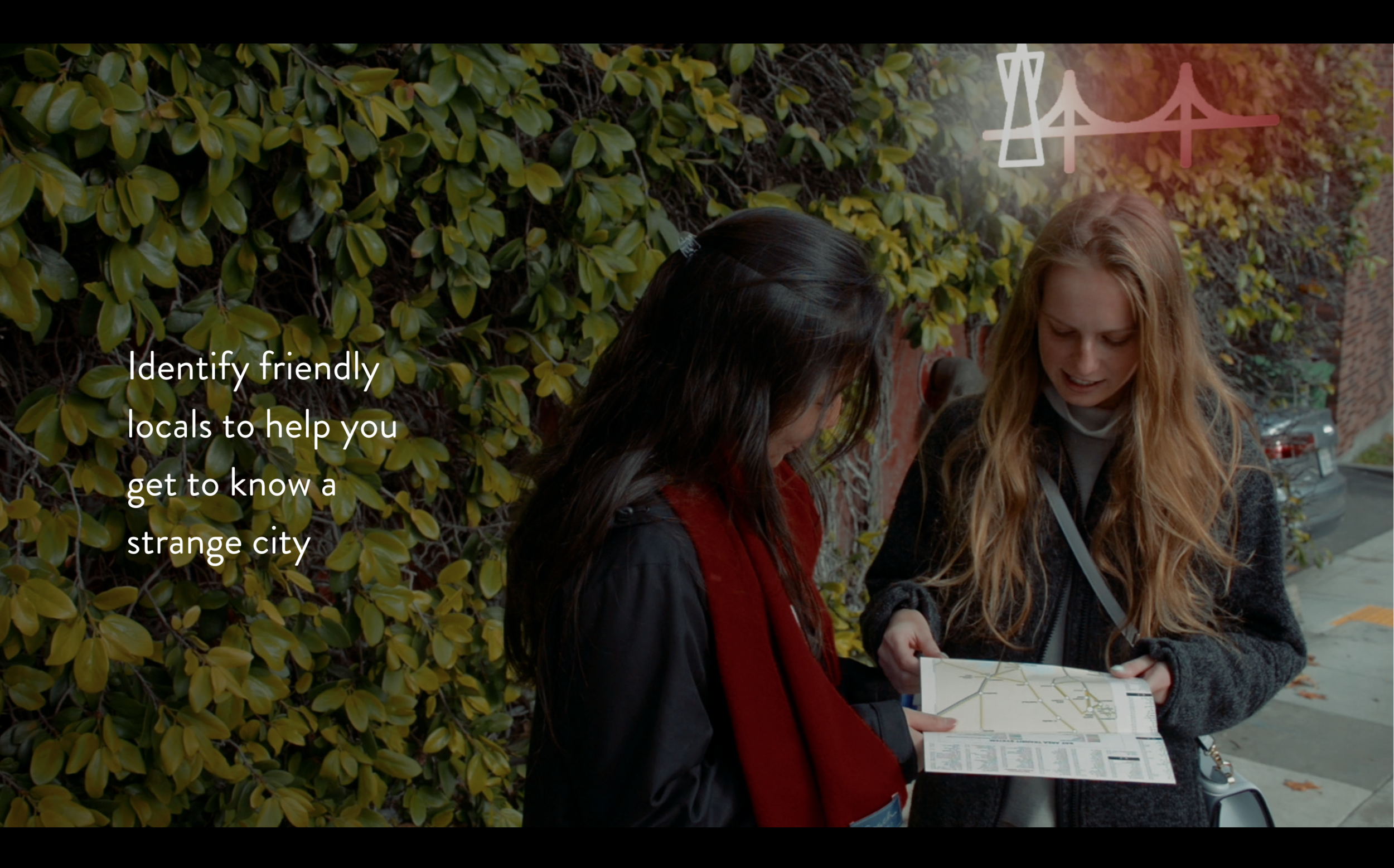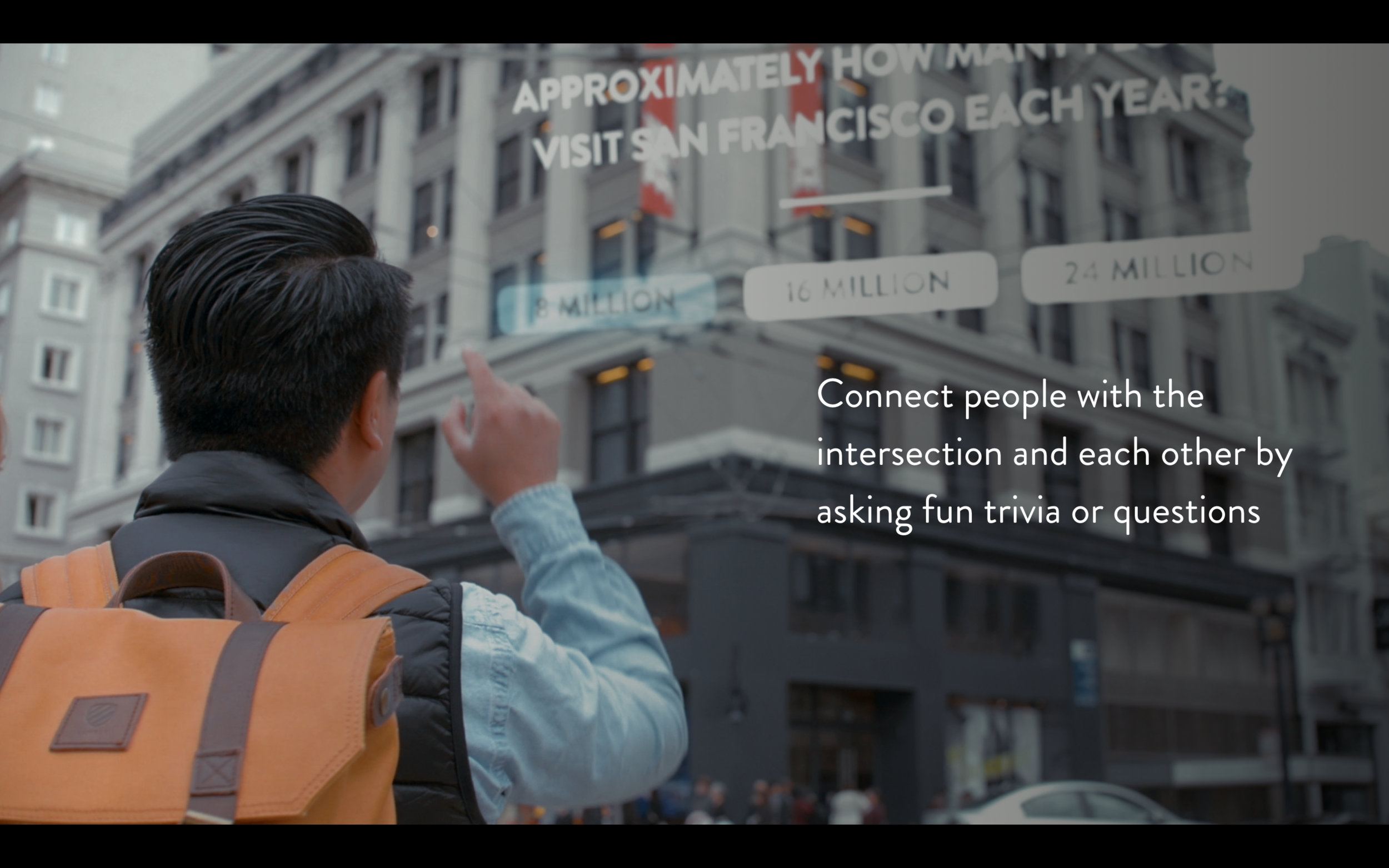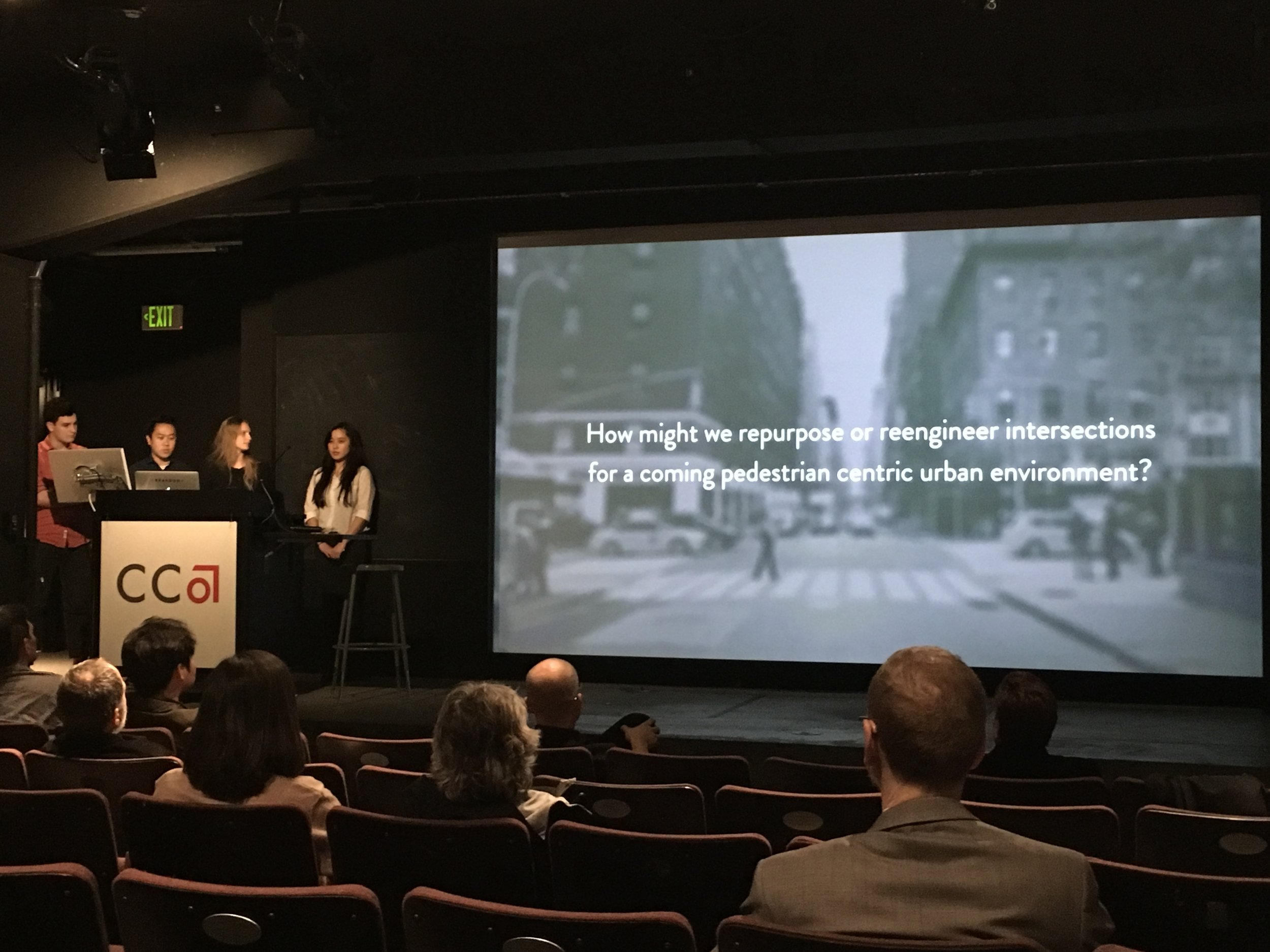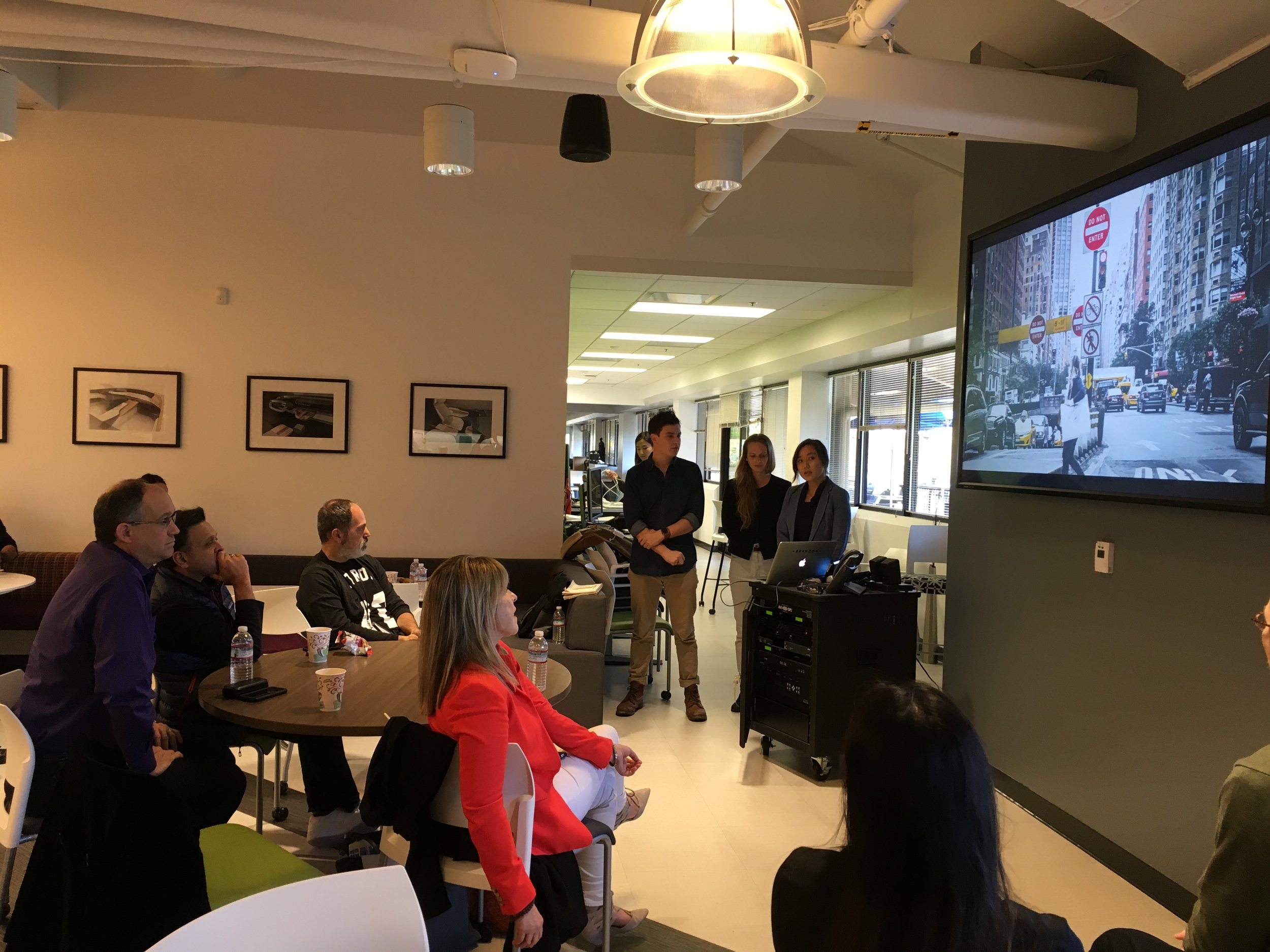Project Overview
We worked in collaboration with Ford Motor Company to imagine the future of mobility in San Francisco.
Our goal was to focus on intersections and how we could make them a safer, yet more engaging experience for pedestrians. While the city is all about the people, it’s built for cars — people don’t feel safe or put themselves in danger through numerous technological distractions. What if that technology could turn your focus to the environment around you?
My role
UX design, user research, concept sketches
Duration
Nov. 2016 - Dec. 2016
Final video concept
Background
We worked on this project as a group of 4 to rethink how San Francisco could become a safer place for people to walk around. Initially, we were a little hesitant to work on intersections because we weren’t sure what sort of advanced technological designs we could come up with.
What helped us move forward was thinking about how the urban environment should be a place for people to trust in their safety. Focusing on a future where people can walk around the city freely without worrying about distracted drivers or pedestrians gave us a direction to work towards.
Research and synthesis
RESEARCH IN THE CITY
I went out with a teammate into the most popular parts of San Francisco and talked to anyone who was willing to chat with us. We had people who were born-and-raised locals, tourists, and public transportation drivers.
A lot of the concerns we heard were around the confusing layouts of the city, the fact that people don’t seem to stop for each other, and just the overall volume of cars and people practically on top of each other, especially during rush hour.
Synthesis
Taking the data from our primary and secondary research, we worked together to figure out what some of the main problems were that we wanted to focus on. From there, we generated several How Might We questions to help generate some concepts.
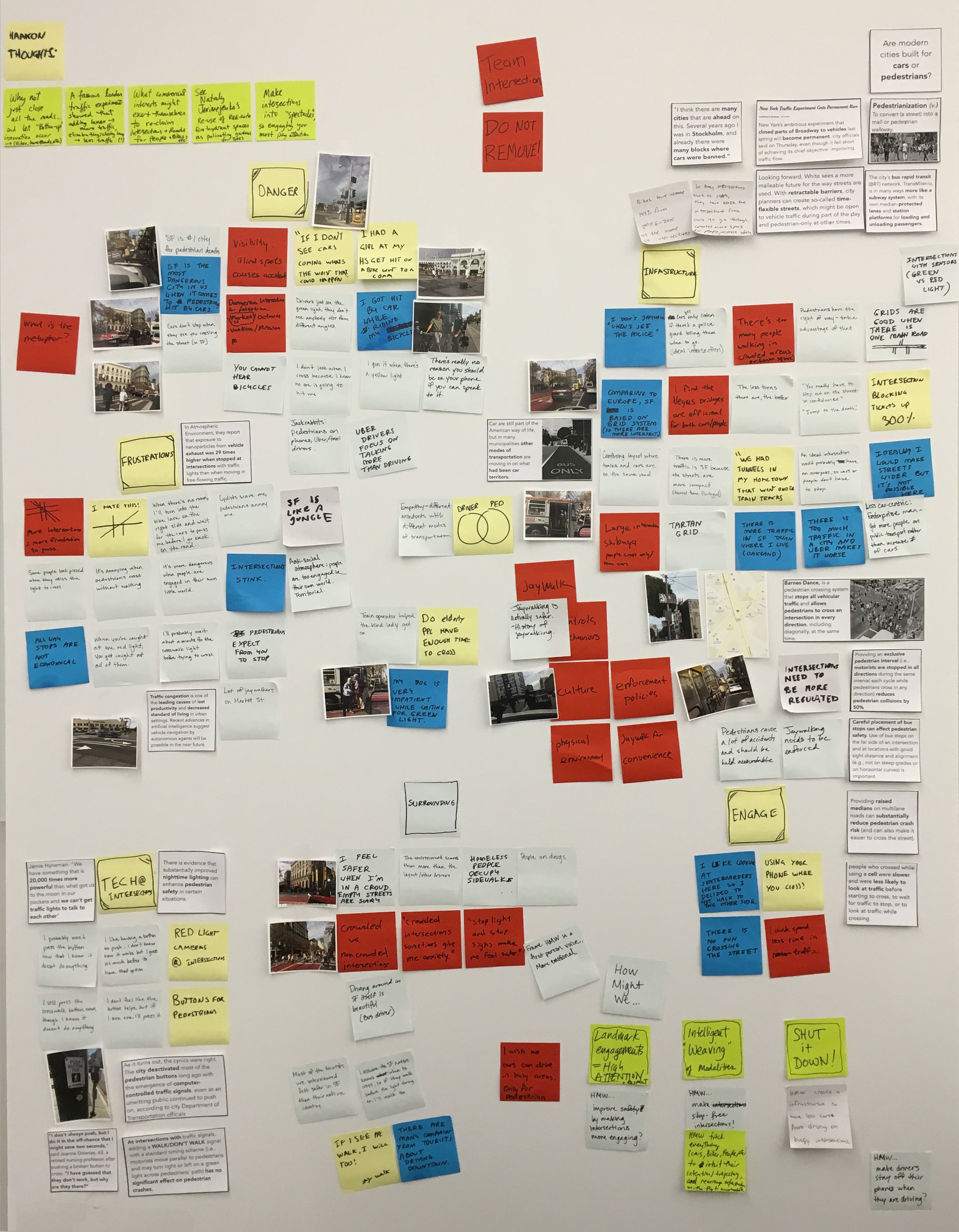
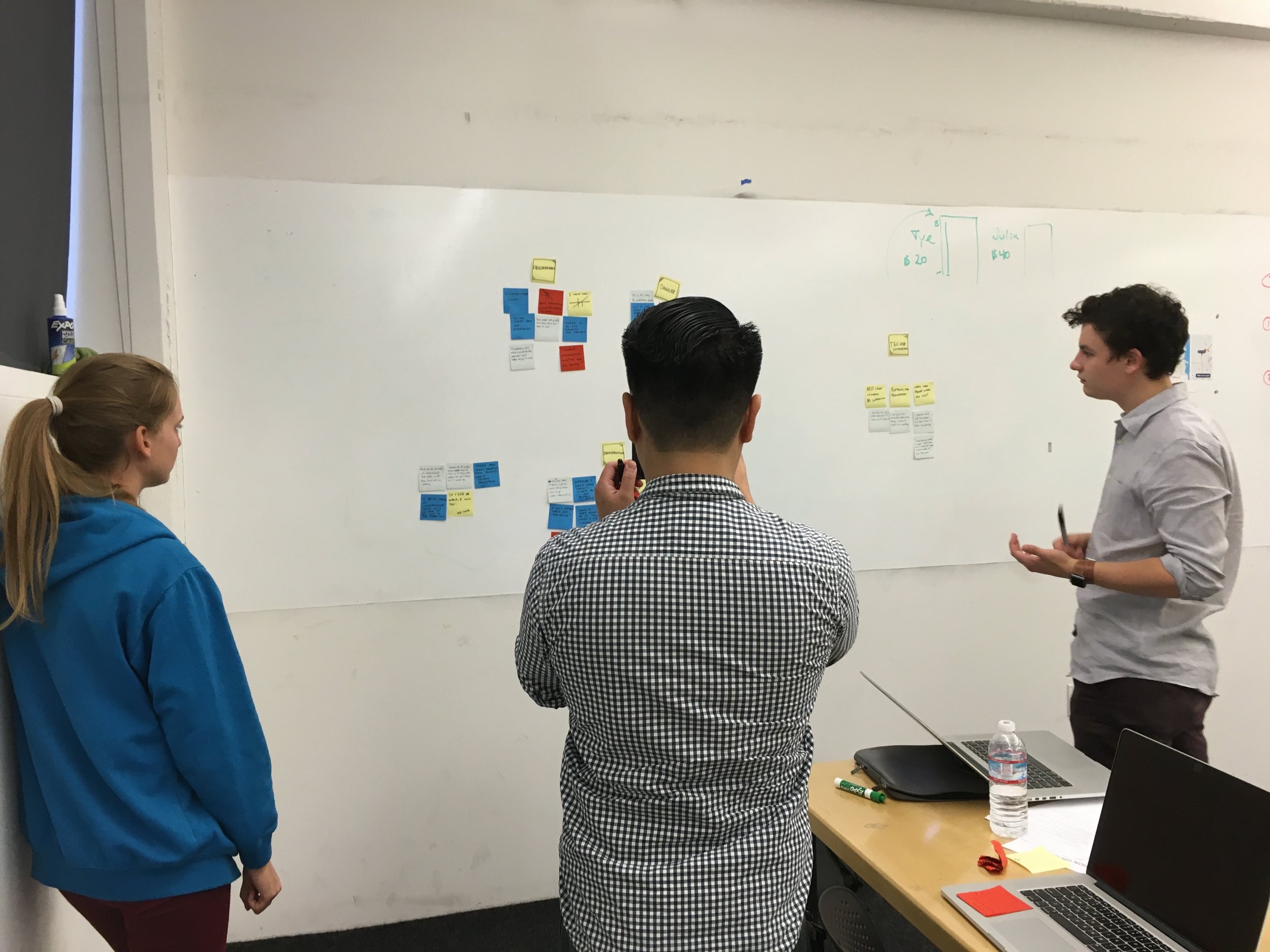
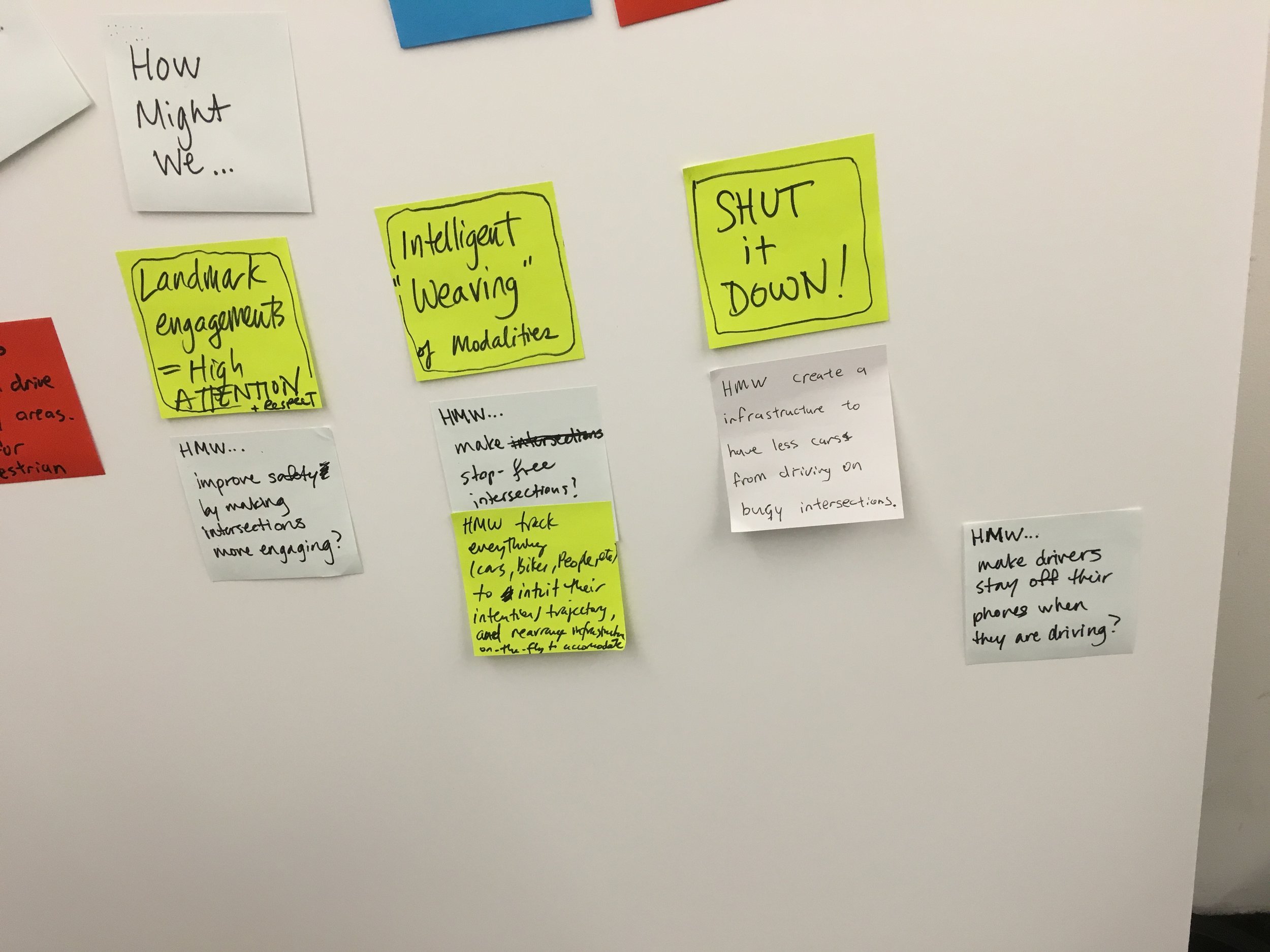
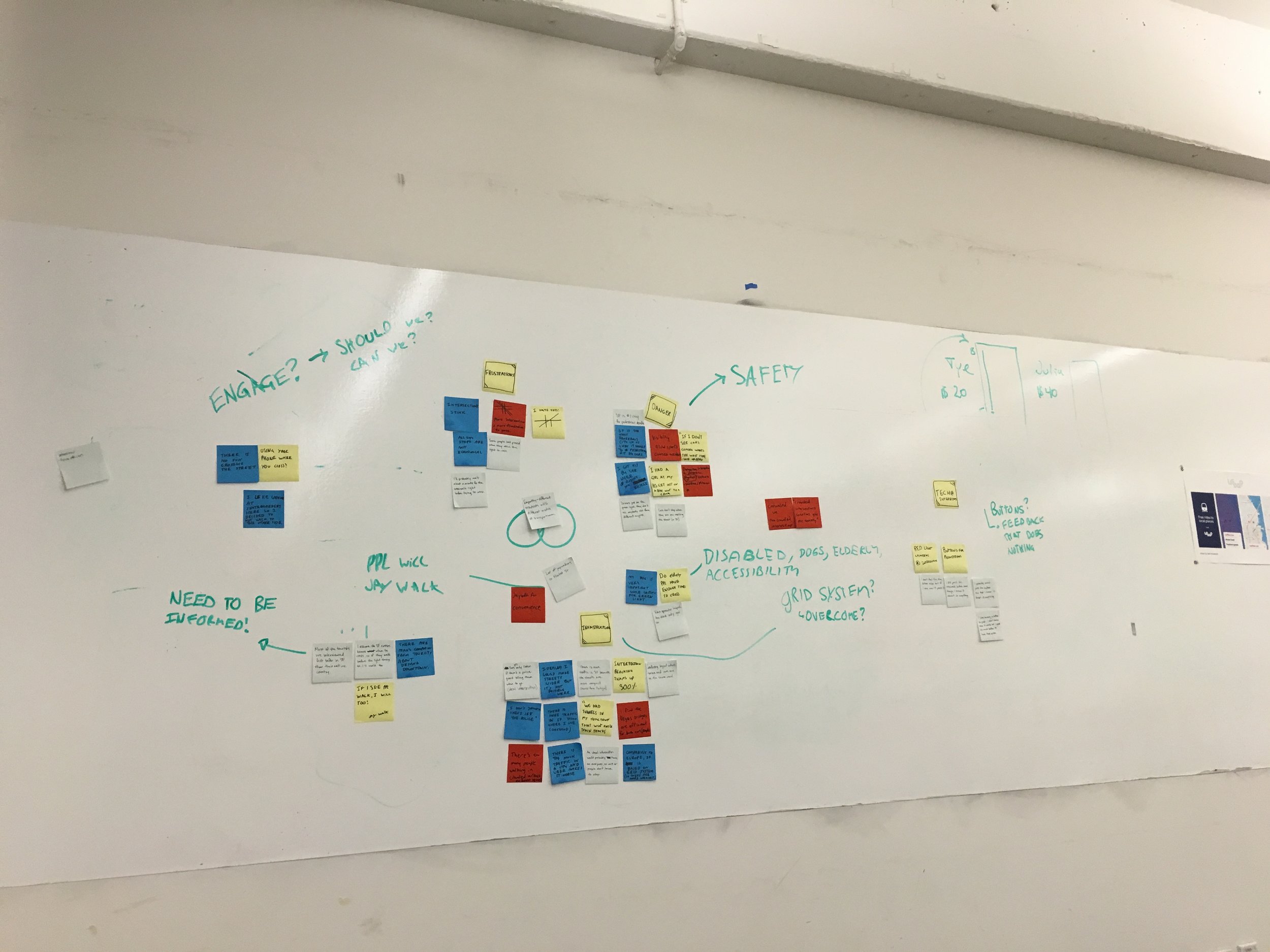
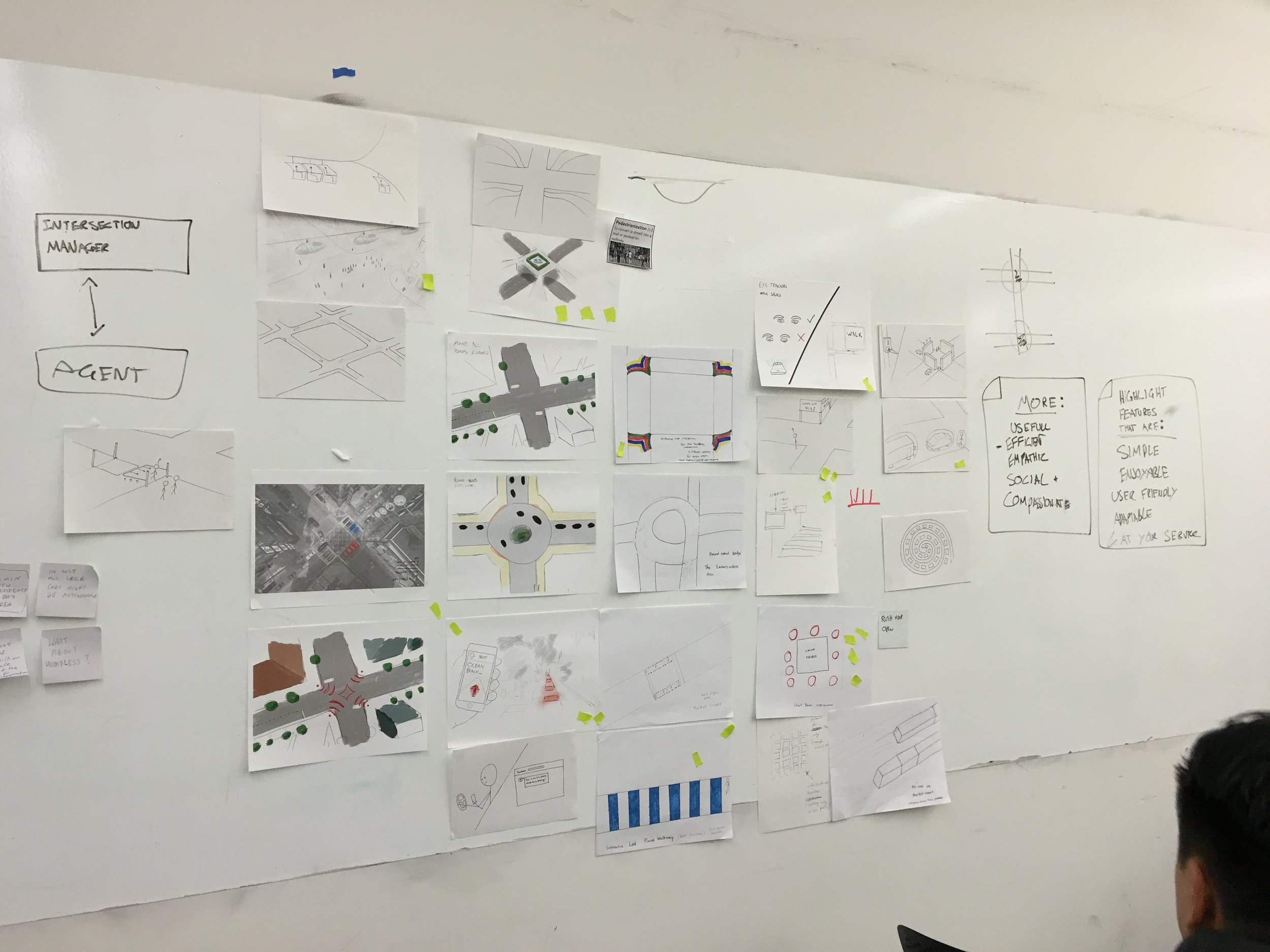
Brainstorming concepts
Concept Sheets
We presented our concepts to representatives from Ford at an interim critique. Some of our concerns had to do with the cost of adding this technology to the streets or to change the infrastructure. We were encouraged to think less about the technicalities and more about the experience for the people.
Matrix
After plotting out people, traffic, predictability, and unpredictability onto a 2x2 matrix, we found interesting possibilities between the intersection of predictable traffic with unpredictable people.
Final ideas and presentation
Final Iteration
Ideas for our final iteration included concepts like turning crosswalks into games where people are asked trivia questions, opting in to be indicated as a local to help tourists, seeing a friend near the area, and leaving virtual messages to crowdsource city improvements. These ideas were inspired by the 2x2 matrix.
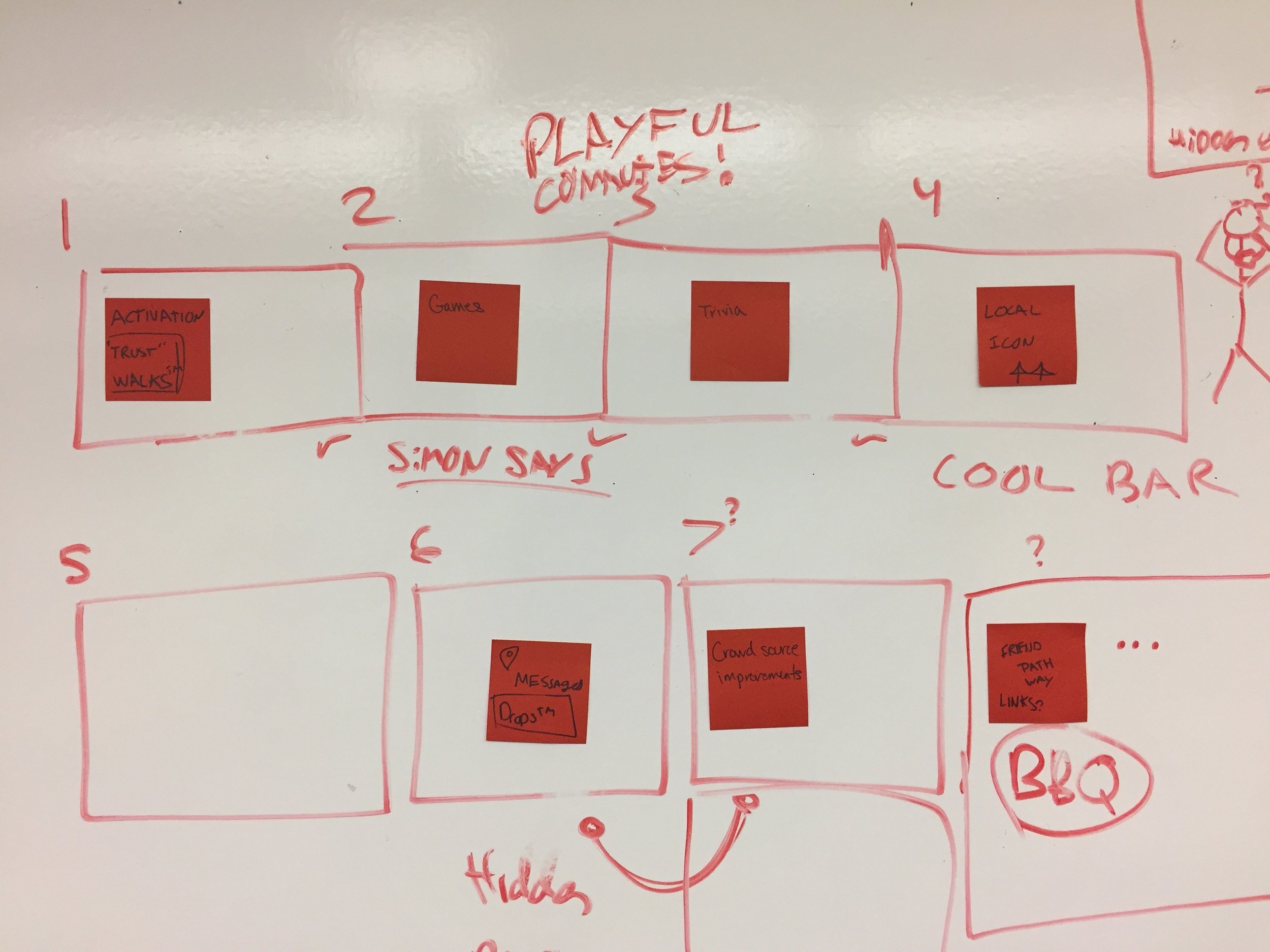
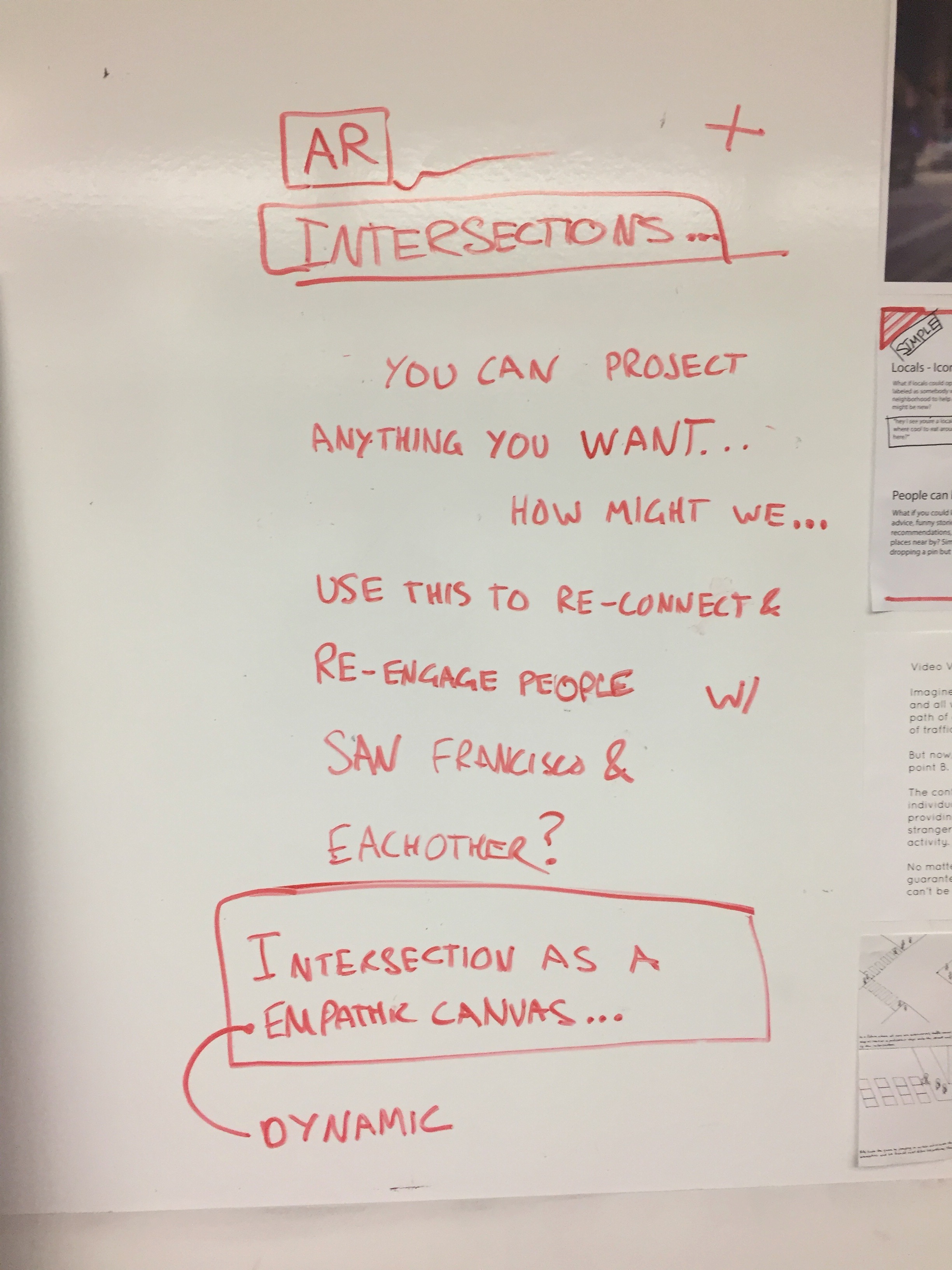
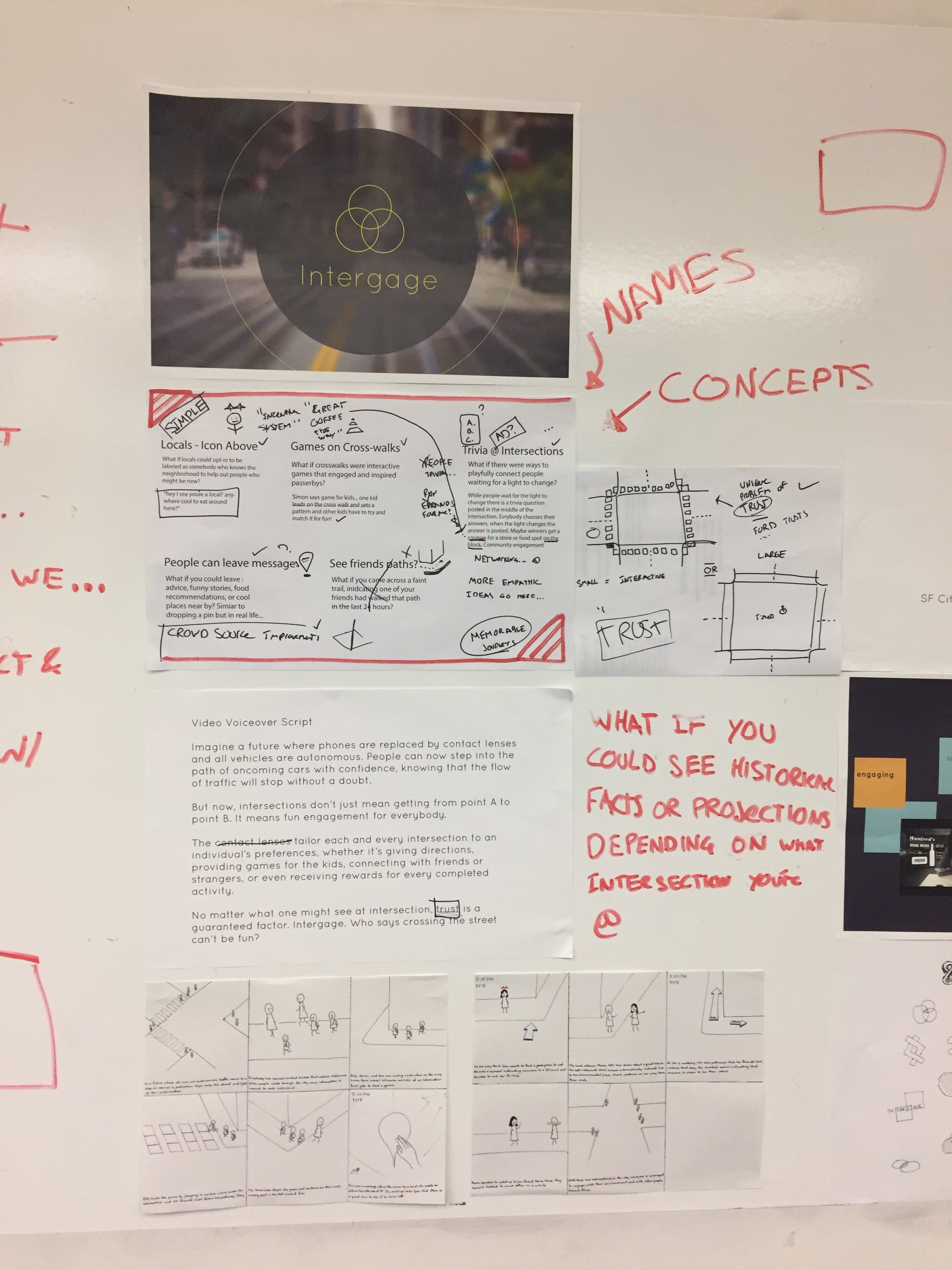
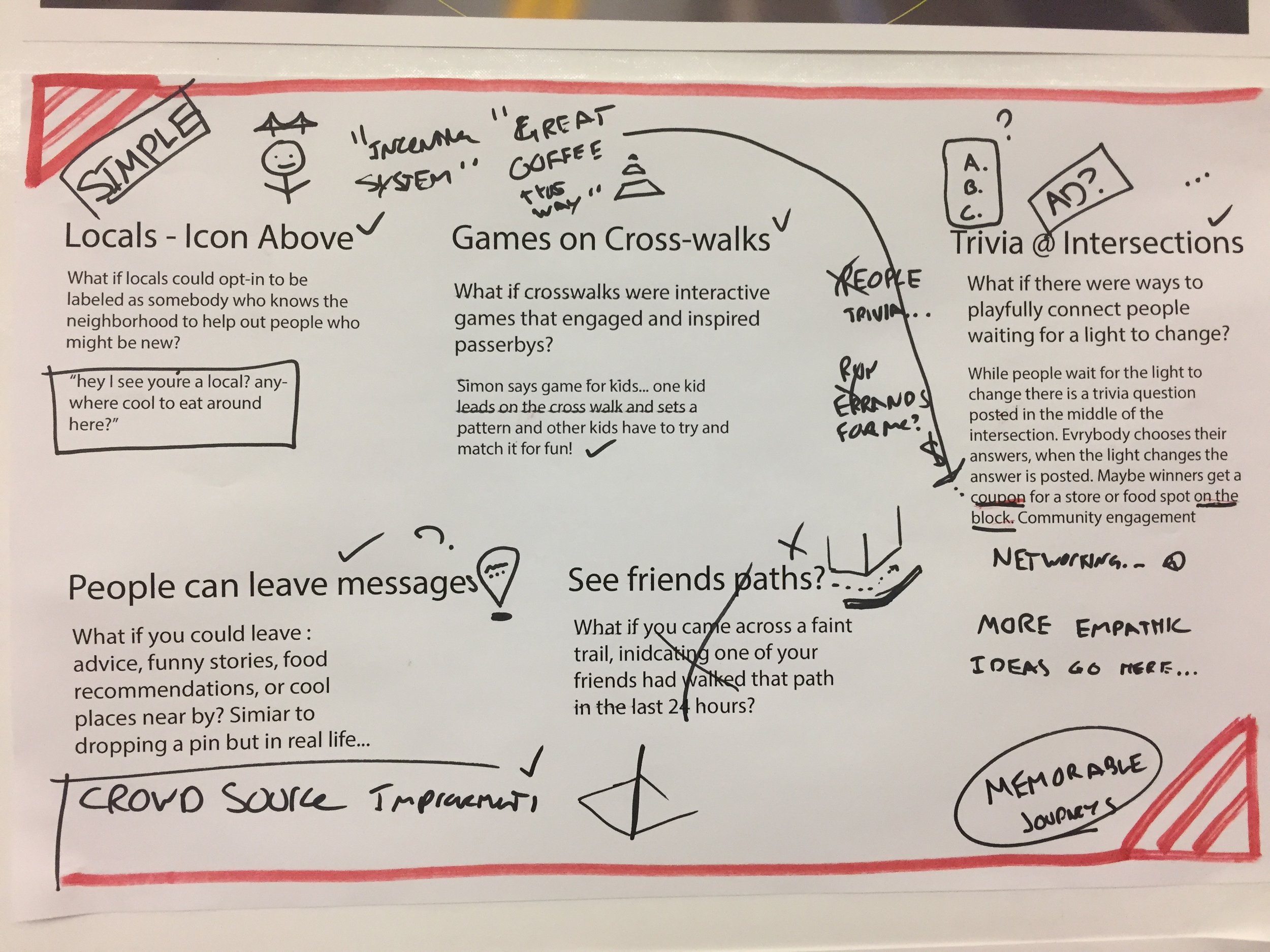
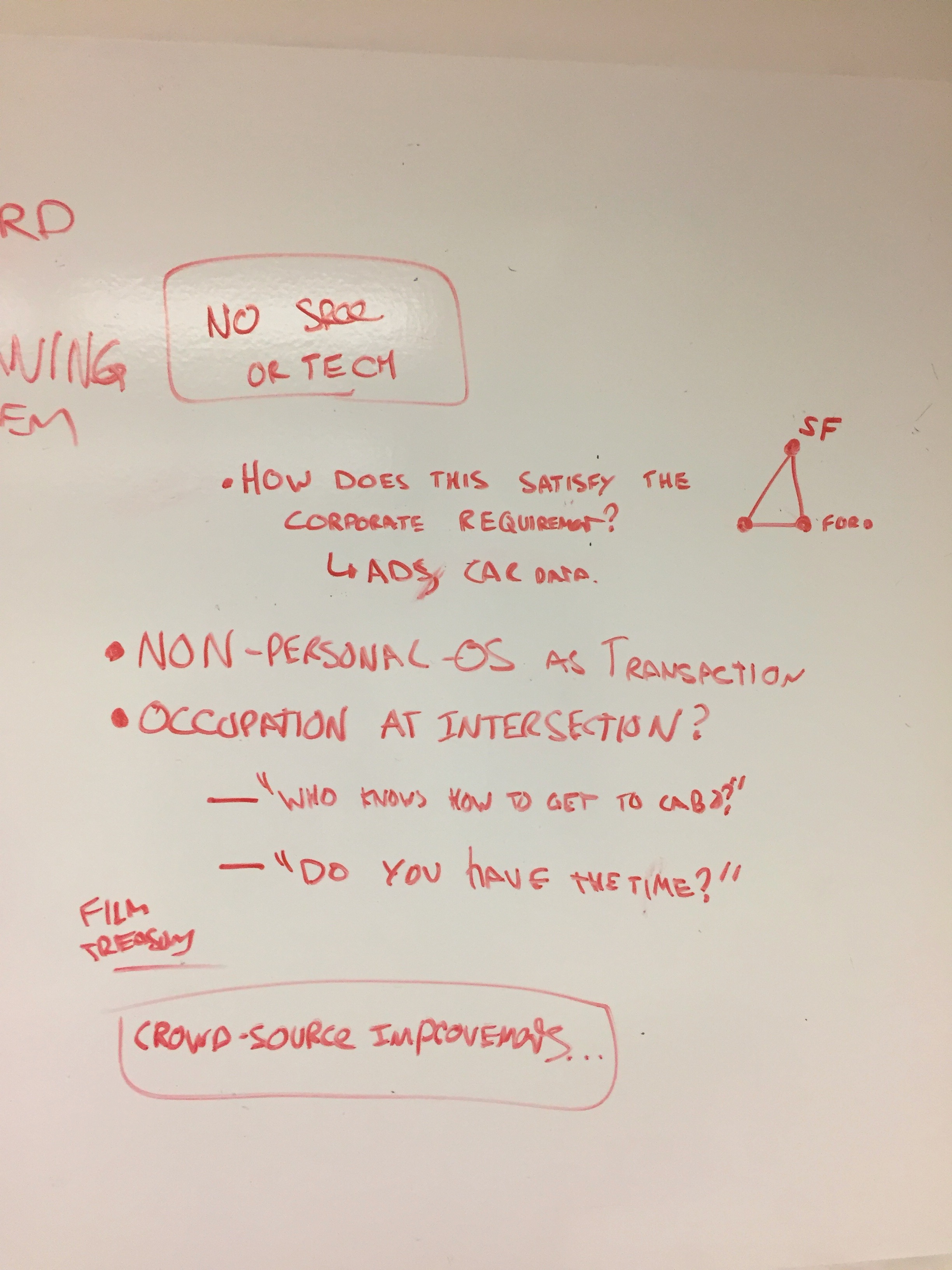
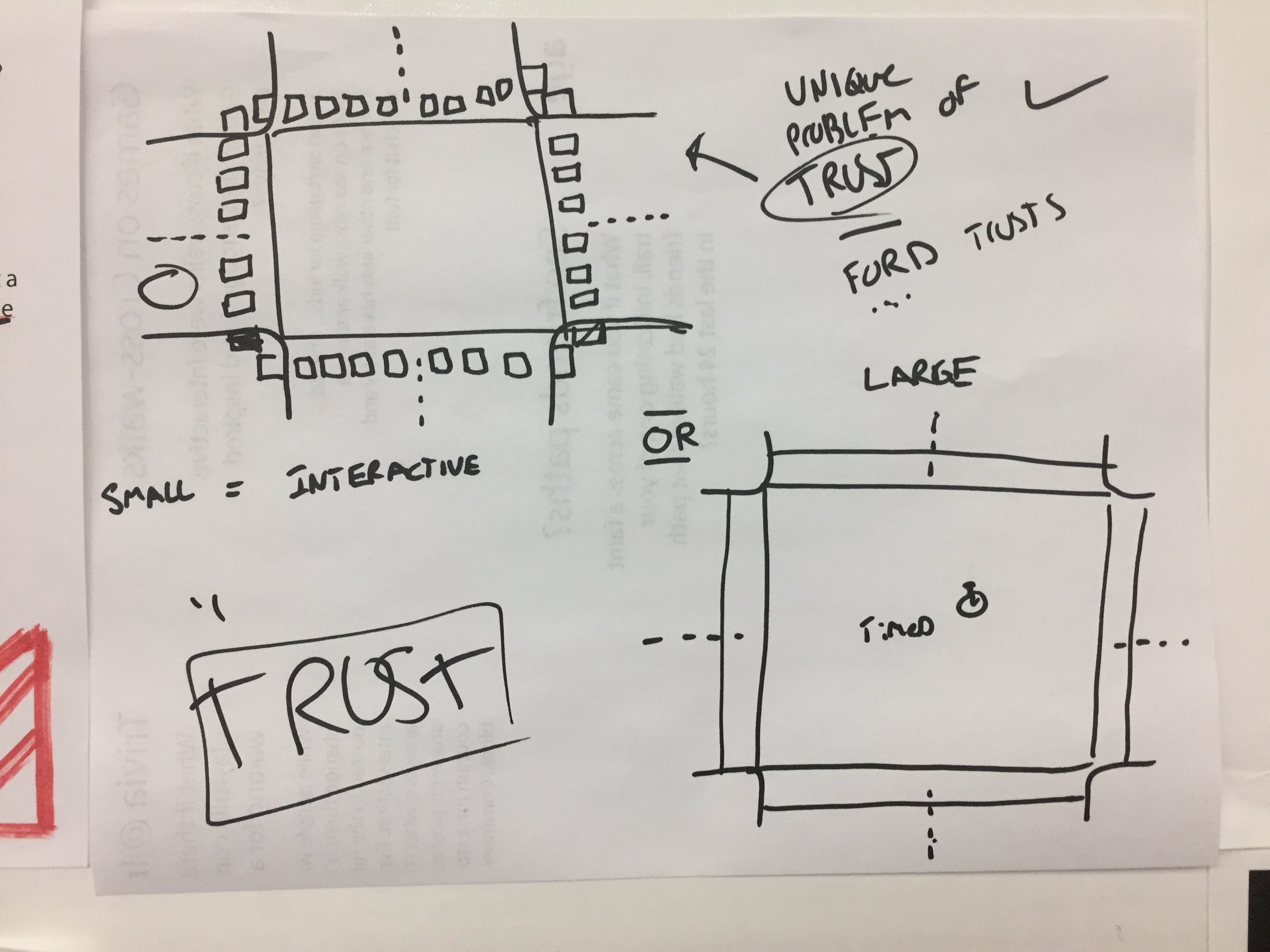
Presentation
Our final video was presented to representatives from Ford and officials from the city of SF on the CCA campus. We were invited to present these ideas again in their Palo Alto office in front of the CEO.
